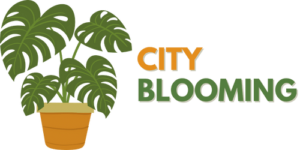Some Known Questions About City Blooming.
Some Known Questions About City Blooming.
Blog Article
The smart Trick of City Blooming That Nobody is Talking About
Table of ContentsTop Guidelines Of City BloomingThe Basic Principles Of City Blooming City Blooming - The FactsCity Blooming Fundamentals ExplainedSome Known Incorrect Statements About City Blooming
Interested in expanding food for sale in the City of Chicago? Below is a checklist of regularly asked concerns regarding the rules and laws that farmers ought to take into consideration when intending an urban agriculture task.
The zoning modification does not change any various other codes dealing with composting, building permits, acquiring or renting City possessed residential or commercial property, service licenses or ecological contamination. There are existing codes that regulate these problems and they stay completely impact and may be appropriate to your job. Area yards are normally owned or handled by public entities, public companies or community-based companies and maintained by volunteers.
Urban ranches expand food that is intended to be offered, either on a not-for-profit or for-profit basis. Because of their commercial objective, urban ranches need an organization certificate. Yes. A neighborhood yard is enabled to offer surplus create that was expanded on website if the sales are accessory or subordinate to the yard's key function described over.
The 7-Minute Rule for City Blooming
The quantity of garden compost product can not exceed 25 cubic backyards at any kind of given time according to the standards in 7-28-715 of the City's Municipal Code. Due to the fact that the soil at many brand-new garden sites needs changing, garden compost, dirt, wood chips, or other products can be obtained to build or enhance the growing room.

If a building license is needed then the hoophouse will be taken into consideration an accessory structure. You can discover even more about the structure authorization requirements by calling the Division of Structures. The 25,000-square-foot size limit is planned to avoid a solitary neighborhood garden from dominating a provided block or diminishing the block's existing household or commercial character.
The restriction does not apply to yards situated in Public Open Room (POS) areas. Can there be more than one community yard that is 25,000 square feet on a solitary block? Yes. The size limit uses to private yards, not to individual blocks. No. Secure fencing is not required, nonetheless, yards that have huge car parking locations may be required to mount fence or other landscape design attributes.
5 Easy Facts About City Blooming Explained
B1 & B2 districts call for that all industrial use activities be carried out inside your home. R districts limit industrial task. The laws mirror the function and intent of the Zoning Code. Is fence needed for urban ranches? Yes. Fencings may be called for, together with landscaping and screening, for certain parking lot and outdoor job or storage locations relying on area and the details task occurring.
Urban ranches need building permits and zoning authorizations prior check my reference to construction (indoor plants). Other forms of city review might be required depending on particular structures, tasks, size, landscape design, licensing, public heath and stormwater administration concerns.
Yes. The sort of license is established by what is occurring at the site. The Division of Organization Matters and Consumer Protection can help establish the particular kind of business license that's needed. Yes. Off street car parking is needed for the majority of industrial tasks in Chicago. The required number of garage is based on the variety of staff members dealing with website and not the square video footage of the expanding area.
The 7-Minute Rule for City Blooming

A city farm can market garden compost material created on website, however, the procedure has to comply with the policies in 7-28-715 of the Chicago Municipal Code. Aquaponic systems are permitted inside your home on metropolitan ranches in lots of zoning areas.
Approximately five hives or colonies of honey bees might be kept as an accessory use. Beekeepers need to register with the Illinois Division of Farming. For even more details about the suggested zoning change you might get in touch with the Division of Real Estate and Economic Growth, Bureau of Preparation and Zoning at 312.744.8563.
, which takes location in country locations at the edge of residential areas.
City Blooming Fundamentals Explained
, that seek to form social networks founded on a common ethos of nature and community holism. These networks can develop by way of formal institutional support, coming to be incorporated into neighborhood town planning as a "transition town" movement for sustainable metropolitan growth.
Some of the first proof of city agriculture comes from Mesopotamia.
Report this page